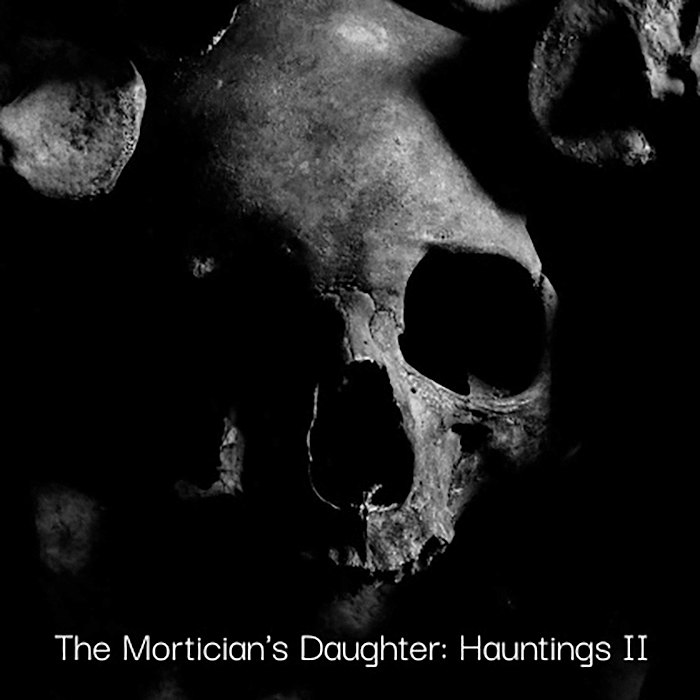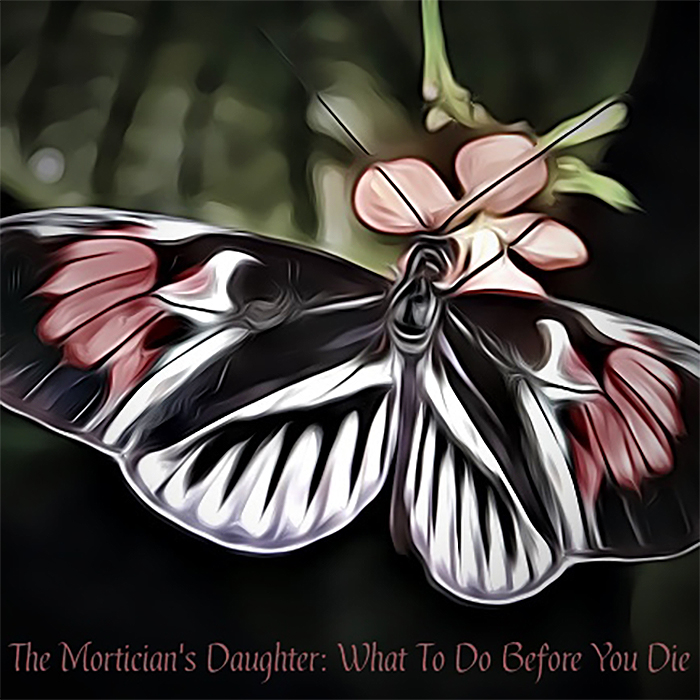Episode Transcript
Good day, my dearly despondent, I’m excited to be here with you once again. We’ve all survived to another episode. That’s most excellent. Back in our first season, I alluded to a future episode on Dark Goddesses of the Graveyard and then, as one listener pointed out, I didn’t get around to it.
Well, I’m about to fix that mistake. At least, I’m going to start fixing that mistake. Right after this brief message from our sponsor…
Okay. There are too many fearsome goddesses to cover in just one episode. Instead, we’re going to focus on three that sit near and dear to my heart. Persephone, Maman Brigitte, and Kali.
Soooo….. We should probably get started because there’s a lot of ground to cover. In fact, we’ll be spanning the globe on this one. So let’s begin with with ancient Greece and the Goddess Persephone.
Persephone is the daughter of Demeter, the Harvest goddess, and Zeus, the sky god who served as team captain to the goddesses and gods of Olympus. Taking after her mother, Persephone was a spring goddess, or, as I like to say, goddess of plants.
And, much like people, plants follow life and death cycles. They just do it faster than people, hopefully. I definitely hope people live a lot longer than the plants I personally care for. Don’t worry. The statistics are a solid no.
Anyway, the story of Peresphone goes something like this. Persephone was kidnapped by Hades, the powerful God of the Underworld, and taken to the Underworld. It's even said that Zeus gave his stamp of approval on the abduction and subsequent rape of Persephone because Hades claimed to love her.
The one thing these monsters forgot about was Persephone’s mother, Demeter, the goddess of, say it with me, the harvest. Alright, so Demeter discovers her daughter is missing and panics. She searched Earth, like, all of it.
While this is happening, she is not tending to her harvest duties. Things aren’t growing, people go hungry. The entire pantheon is upset about the situation so Helios, the sun god, tells her where Persephone is.
At this point, Zeus needs to get this problem he helped create resolved. He demands Hades return Persephone to Earth and to her mother. This god of the Underworld is so shady. He lets her leave but he offers her a snack for the road. Just a few pomegranate seeds which she eats.
There’s the kicker. You can’t eat things in the underworld if you plan on ever leaving. And, since we’re on the topic, same rules apply to fairy realms. Eat something and you are stuck.
Okay, so this totally ruined the plan. An agreement had to be struck. Instead of returning to Earth, free and clear, Persephone would have to spend a third of the year with Hades in the Underworld.
So, the time Persephone spends in the underworld, ruling beside Hades, is known as Winter. The growing and harvest seasons happen when she is on earth.
Now, some folks say Persephone was given say in the matter and ran off with Hades because she loved him. You know, less about rape and abduction and more about love and ruling over a dark realm. Whether that’s revisionist history or where things first started, well, I frankly don’t care. And, more importantly, I don’t care which version of the story you want to tell either.
Maybe Persephone is empowered in her choice to eat the pomegranate seeds. Maybe she wanted to be the Dark Queen of the Underworld and those seeds were her last attempt to hold onto her life in that realm.
Or maybe it was just another act of violence committed by men against women. Who knows!
I will tell you that Persephone was a figure of dread for many. In Homer’s epics, she appears beside her husband as paired rulers. As the Goddess of Death, she was sometimes said to actually draw her lineage from Zeus and Styx. Yes, the river.
Not sure how that works totally but that would not be the only time in Ancient Greece that a river’s been involved in a matter of the heart.
Okay, back to Persephone and Demeter. There were agrarian cults devoted to this mother-daughter pair and they honored the goddesses every year with a little something called the Eleusinian Mysteries.
This annual festival marked the story in three parts: the descent, the search, and the ascent. The search, of course, pertains to Demeter’s search for her daughter. Participation in the ritual was said to increase longevity and ensure a happy afterlife. Important Greeks of Ancient history, like Plato and Marcus Aueralius, have taken part in the ceremonies. I mean, I wasn’t there, but I’ve heard.
Some scholars believe these rites for the harvest goddess and her springtime daughter might even precede the Greeks and have even been associated with the Minoan Poppy Goddess.
So, the Eleusinian Rites can get pretty rowdy. There’s a night of celebration and often included the use of hallucinogens to encourage spiritual visions.
Personally, I like to think of Persephone as an I-do-what-I-want kind of girl who snagged those seeds to stay with a person she loved in a realm she ruled. If Persephone would like to correct that narrative, I’m totally open to hearing it.
Now, some might argue that the next one on our list is not a goddess at all. In truth, she is a lwa or spirit in Haitian Voodoo. Haitian Voodoo is similar in some ways to other religions or spiritual practices of the African Diaspora, like Santeria, but each belief system is unique.
But, like I said, there’s a little overlap. Maman Brigitte is a death lwa who claims graveyards as her terrain, along with her husband, Baron Samedi, and she is sometimes also called Gran Brigitte or sometimes just Grann or Manman, which means mother.
So ever so briefly touch upon this part of history which deserves a whole lot more than just a brief mention. In fact, it deserves classroom time, but we need to get back to Maman Brigitte.
When Africans were stolen from their homes and brought to the Americas to work as slaves, they were not allowed to continue the spiritual practices of their homeland. Their gods or, rather, the spirits they revered could not be openly worshiped. Instead, we see some synchronicity emerge when the enslaved African people and their descendants hid their sacred figures behind the Catholic saints.
There’s over a thousand lwa. Please keep in mind there are some 10,000 Christian saints and an arguable 330 million Hindu deities. Just to offer some perspective.
Okay, Maman Brigitte is sometimes associated with or represented by Brigid of Kildare. Saint Brigid is one of the patron saints of Ireland, along with St. Patrick and Saint Columba, and she was said to be the daughter of a chieftain and a slave woman. Brigid, however, goes back to the Celtic culture who preceded the Christians in Ireland.
In fact, Saint Brigit’s feast day actually falls on the first of February which is also known as Imbolc, the day that marks the beginning of Spring in the pagan religions of the British Isles. Now, is it a coincidence that Saint Brigit’s feast day falls on the same day of Imbolc? Probably not.
Okay, back to a differen continent… In Haitian Voodoo, the Bondye is the ultimate supreme being. It is Bondye that made the universe and assigned its order. However, Bondye is not available for direction interactions with humans and must rely on lwas to act as his intermediaries.
Maman Brigitte rules over cemeteries and graveyards. She watches over graves marked for her protection. Depending on where you lie on the gender spectrum, offerings might be made to her at the time of your death. For you masculine types, offerings can be made to Baron Samedi, her partner in all things, so that he might watch over you in the great whatever.
Lwa aren’t usually your pious, saintly types. No, their proclivities often run in the opposite direction. Maman Brigitte drinks rum with hot peppers, swears like a sailor, and loves fire, dancing, and black roosters. Green, purple, and black are the colors associated with her.
Maman Brigitte is one of the Ghede - lwas of death and fertility. Much like the Persephone-Demeter narrative, Maman Brigitte and the Ghede connect life and death in one ongoing cycle.
Maman Brigitte is called upon to protect mothers in childbirth just as she is called upon to protect the final resting place of women who have passed on. She offers healing to those who have not hit their expiration date. She protects women. Maman Brigitte shows us that life and death exist side by side and not in opposition to one another.
Along with her husband, Maman Brigitte stands watch over life and death, over our histories and our heritage, and yes, over our graveyards, which is where you will most likely find her if you need to make a request. She is fierce and a protector of women so all you evildoers out there have been warned.
Some scholars have suggested that Maman Brigitte is the one Haitian lwa whose origin traces back to Europe and Saint Brigid, rather than the orisha of the Yoruba people in Nigeria. Others point to Ọya, an orisha, associated with death and rebirth, as well as stormy weather, when looking to the origin of Maman Brigitte.
Frankly, not my call, but I do know that I respect the life and death balance Maman Brigitte holds in her graveyard home.
Alright, time for one more? Are you ready?
Then let’s jump right in with Kali, Hindu goddess of destruction. Perhaps you've seen her? Wild hair, wild eyes, usually has dark blue skin, oh, and then there's the necklace made from demon heads. Kali emerged when the goddess Durga was attacked by two asuras, or demigods. She became enraged. Her face turned dark and Kali emerged wearing a tiger skin and slew the two demons or evil asuras. When Kali went on to fight another asura, one who can replicate himself in every drop of his blood that hits the ground.
She unrolled her tongue and killed the demon and his clones, catching the blood on her tongue as it fell. Of course, too much demon blood is bad for you, even if you happen to be a goddess. Kali's bloodlust runs wild and she sets off on a path of destruction. Only when Shiva intervenes, and lies beneath her so she might stand on him, is Kali appeased.
Kali is fierce, she is rage, she is a force of time. And, dear listeners, you can’t stop time.
Kali and Shiva together represent the destructive part of the triadic nature of the universe. Creation, preservation, destruction, then back to creation.
When things are destroyed, new things can come into being. In tantric interpretations, Shiva and Kali represent the unification of consciousness and energy. And, unlike the Western world's depiction of tantra, it is a practice of extreme discipline and not lavishness.
For the third time in this episode, we start off with a ferocious graveyard goddess, holding court amongst the tombstones, only to find out they are connected to life as much as death. And that’s because death is part of the lifecycle. You can’t have one without the other.
And that’s why we’re gathered here today. To acknowledge death as a part of life. To look at it and think about it and wonder. I hate unknowable things, but I do like the scope for the imagination.
Whether you ask Persephone or Maman Brigitte or Kali or even Saint Brigid to serve as your guide, I suggest exploring the graver side of all things. I mean, could we really appreciate the splendor of spring if it didn’t follow winter? I don’t know, but I do know that we don’t have an option and pretending otherwise is a surefire way to a personal crisis.
Friends make friends consider the implications of their inevitable demise. And with that, I must bid you farewell. I’ll be back next month. Until then, hold your breath walking by graveyards. The rumor is, the dead get jealous.


